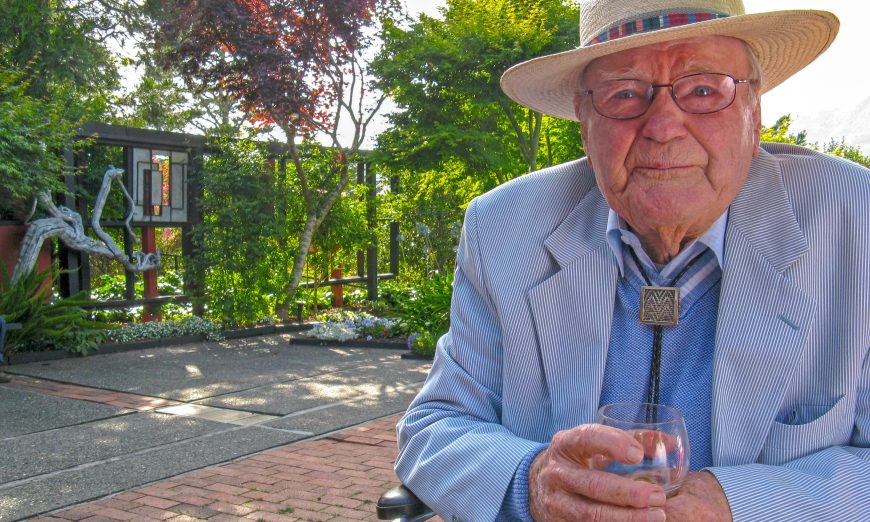The California modernist landscape architect who designed Santa Clara’s Central Park, Robert Royston (1918-2008), was honored by the Cultural Landscape Foundation as a pioneer of American landscape design.
Royston, a San Francisco native, has been added as the 16th architect in the foundation’s award-winning video series Pioneers of American Landscape Design Oral History Project. Launched in 2003, the project documents, collects, and preserves first-hand information from pioneering landscape architects and educators nationwide.
Royston grew up on his family’s 18-acre walnut farm near Morgan Hill and graduated from UC Berkeley. He was a founder of what is now the Mill Valley architectural firm Royston, Hanamoto, Alley & Abey.
“Bob’s most notable work was in the conceptualization and design of large-scale public parks,” reflects colleague Tito Patri. “In the postwar boom years, even as orchards in the Santa Clara Valley south of San Francisco were being gobbled up by single-family-home subdivisions, some jurisdictions managed to preserve generous open space areas for community parks.”
The City of Santa Clara commissioned Royston’s law firm to design 52-acre Central Park in 1960. Then Parks and Recreation Director Earl Carmichael worked closely with Royston to develop a master plan for the park. It was constructed in 17 phases and completed in 1974.
Nowadays, Santa Clarans don’t think twice about the then-innovative characteristics of Central Park that are typical of Royston’s early park designs: well-defined communal and private spaces; attention to the shifting views from pathways; diversity in trees, shrubs, and ground cover; and constructed berms that provide gentle topographic shifts.
Central Park has broad meandering, concrete paths that connect the community center, tennis courts, library, swim center, baseball fields, picnic areas, playgrounds, and lawn bowling course.
At Central Park’s center are an amoeba-like, two-acre lake with fountains, redwood groves and two meadows. A circular, open-air pavilion has a stage at one end and surrounding picnic tables shaded by a wisteria-covered, wood pergola.
Royston was ahead of the times in recycling building materials. One creative, child-centered park playground is a three-dimensional maze of hollowed granite cubes. The cubes are discarded material from the columns of San Francisco City Hall.
Ten years ago, on April 6, 2010, steel bridges designed by Royston’s firm were installed to replace the two weathered wood bridges across Saratoga Creek, which separates the east and west sections of Central Park.
Over the course of a career lasting more than 60 years, Royston was widely influential as a landscape architect, an academic and as a role model and mentor. His 43:27-minute oral history by the Cultural Landscape Foundation is parsed into 19, one- to six-minute clips, organized under the themes of “biography,” “design,” and “projects.” His history includes an interview transcript and recollections by colleagues.
“There is a small army of landscape architects around the world that have been influenced by him,” reflects colleague Doug Nelson.
Santa Clara’s idyllic Central Park is both a legacy and a memorial of Robert Royston.






